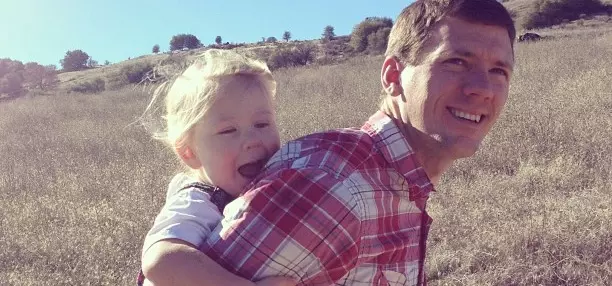In the recent Baltimore riots, someone was missing. And if we want to look at the issues of poverty, of crime, of violence and more, someone is almost always missing. D.A.D.
Three letters comprise the answer to our cultural breakdown, the answer to violence and the answer to poverty.
“It’s not a color issue,” a sheriff told me recently as he talked of breakdowns across the country. And he is right. Because all of this points to fatherlessness.
If we can solve the puzzle of the missing Dad, we change our culture in the coming generation.
This is a puzzle all of us in pregnancy help ministry face, almost on a daily basis. The overwhelming majority of those we see either have an issue with their own fathers (absent physically or emotionally), or are facing a situation where their own children will be fatherless.
Tweet This: "If we can solve the puzzle of the missing dad, we change our culture." @KirkWalden
This is not to say that we don’t ever see women and men from solid, thriving homes with present fathers. All of us know that a pregnancy outside of marriage can happen to anyone who makes certain choices.
But let’s be honest here. The odds of an out-of-wedlock pregnancy go up not because someone is black, white, Hispanic or Asian; but when there is a cycle of fatherlessness in one or both homes.
I appreciate the abstinence-based educational initiatives we have. The effectiveness of this approach is clear, regardless of what detractors say, and we are reaching this generation.
[Click here to subscribe to Pregnancy Help News!]
Yet if our goal is to reduce unplanned pregnancies in the next generation, engaging fathers is not only a good idea, it is essential. Not only this, but if we want to re-create a culture of life and of hope, doing our part to build two-parent families is a key part of the equation.
Many pregnancy help centers are working to do just this. In fact, we ran a story a few months ago on Gary Freeman, who is reaching dads full-time with Gateway Pregnancy Center in Raleigh, NC. His story is one of many where PHOs are making major investments in building fatherhood.
[Check out this uplifting story of fatherhood.]
While there is not one perfect way to engage dads, there are two clear pathways to creating two-parent families; marriage and adoption.
We count a lot of outcomes in our PHOs. We track appointments, visits, pregnancy tests, spiritual decisions, pregnancy decisions and more. We do this because we want to know our effectiveness in changing and saving lives.
Are we proactively counting marriages? Are we actively surveying our adoption statistics, looking for ways to build these numbers? Many of us are, and that is good news.
Tweet This: "Changing a culture starts with building fatherhood." @KirkWalden
When we as PHOs began measuring our ability to reach the abortion-determined and vulnerable clients, we started to see improvement. The more we focus in on the number of two-parent families created through our PHOs, the more we will see these numbers go up.
Because when we begin counting anything, we start looking more closely at our results. Staff begin discussing strategies, the board joins the conversation and soon, our budget reflects our interest in whatever outcome we are counting.
[Click here to subscribe to Pregnancy Help News!]
Our society is crying out for fathers. As a dad myself (with five calling me by that name), I’m a big fan of engaging these guys. Today, many of the men who come in the door of PHOs have no concept of their own fathers, no idea of what it means to be a dad.
We have an opportunity to change this dynamic. The answer to “how” will be different for every PHO, from pregnancy help centers to maternity homes, from “large” to “small.”
Two things however, we know. First, changing a culture starts with building fatherhood.
Second? Our ability to build two-parent families begins the moment we begin to count.







